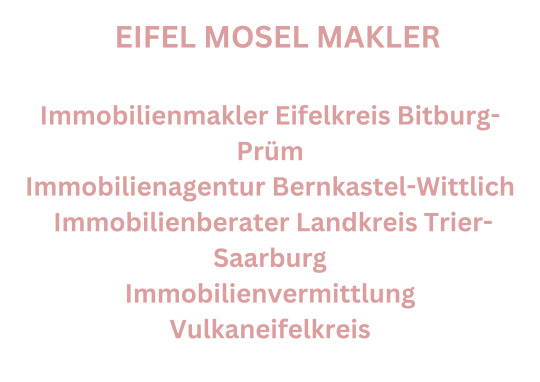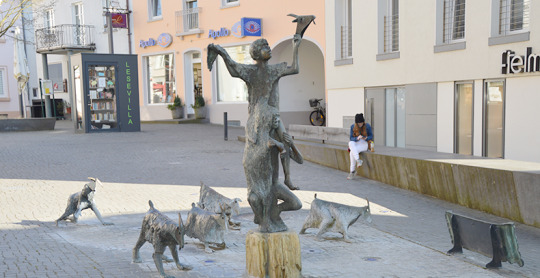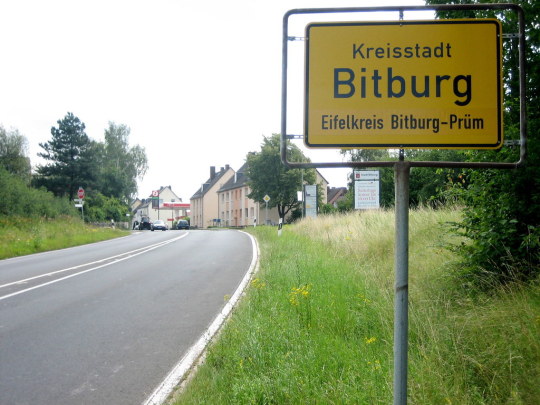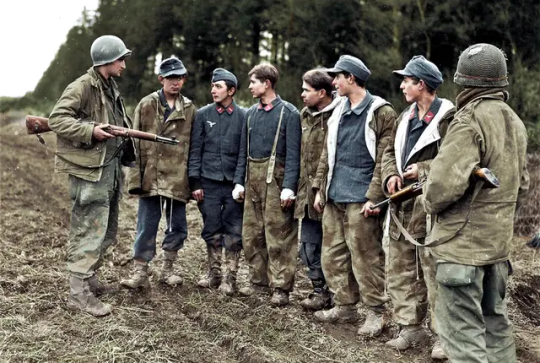#Prüm
Explore tagged Tumblr posts
Text
Tipp: EVBK Kunstausstellung 2025

View On WordPress
#Ausstellung#Bilder#Deutschland#Europäische Vereinigung Bildender Künstler aus Eifel und Ardennen#Exhibition#Gemeinschaftsausstellung#Gruppenausstellung#Konvikt#Kunstausstellung#Luxemburg#Manuela Mordhorst#Prüm#Prümer Land#Sebastian Böhm#Skultpuren#Vernissage
0 notes
Text
Wetterumschwung in Deutschland: Von der Gluthitze zur erfrischenden Abkühlung
Am Sonntag zeigt sich der Sommer in Deutschland von seiner extremsten Seite. Mit Höchstwerten zwischen 30 und 37 Grad Celsius ist vor allem Westdeutschland einem belastenden Hitzeschub ausgesetzt. Die drückende Kombination aus hoher Luftfeuchtigkeit und intensiver Sonnenstrahlung führt vielerorts zu einer fast tropischen Wetterlage. Besonders Städte wie Köln, Düsseldorf oder Frankfurt erleben…
#Berlin#Darmstadt#Düsseldorf#Frankfurt am Main#Hamburg#Hessentag Bad Vilbel#Hessenwetter#Kassel#Köln#Mittelhessen#München#Prüm
0 notes
Text

Hütterscheid, Rhineland-Palatinate.
35 notes
·
View notes
Text
EIFEL MOSEL MAKLER: Immobilienmakler in der Region Eifel Mosel
Willkommen bei Eifel Mosel Makler, Ihrem kompetenten Partner für Immobilien in der wunderschönen Region rund um Eifel und Mosel. Wir bieten maßgeschneiderte Lösungen für den Kauf, Verkauf und die Bewertung von Immobilien. Mit umfassender Expertise und tiefem Marktverständnis stehen wir Ihnen in den Regionen Eifelkreis Bitburg-Prüm, Bernkastel-Wittlich, Landkreis Trier-Saarburg, Vulkaneifelkreis und darüber hinaus zur Seite.
Immobilienmakler Eifelkreis Bitburg-Prüm: Vertrauen Sie auf Erfahrung
Wenn Sie auf der Suche nach einem Immobilienmakler im Eifelkreis Bitburg-Prüm sind, dann sind Sie bei uns genau richtig. Egal, ob Sie eine Immobilie kaufen, verkaufen oder vermieten möchten – wir unterstützen Sie dabei, das Beste aus Ihrem Immobilienvorhaben herauszuholen. Unser Team kennt den Markt vor Ort und bietet Ihnen individuelle Beratung und professionelle Betreuung.
Makler Bernkastel-Wittlich: Ihre Immobilie in besten Händen
Im Kreis Bernkastel-Wittlich begleiten wir Sie als erfahrene Makler beim Kauf oder Verkauf Ihrer Immobilie. Ob in den idyllischen Weinorten wie Traben-Trarbach oder Bernkastel-Kues – wir finden für Sie die passenden Interessenten oder Ihr Traumhaus. Unsere regionale Expertise sorgt dafür, dass Sie Ihre Immobilie schnell und erfolgreich verkaufen oder die ideale Immobilie finden.
Immobilienbewertung Landkreis Trier-Saarburg: Sicher und transparent
Eine präzise Immobilienbewertung im Landkreis Trier-Saarburg ist der Schlüssel zu einem erfolgreichen Immobilienverkauf. Mit unserer fundierten Markterfahrung in Städten wie Konz, Saarburg und Schweich erstellen wir für Sie eine realistische und verlässliche Bewertung Ihrer Immobilie. So können Sie sicher sein, den bestmöglichen Preis zu erzielen.
Immobilie verkaufen Vulkaneifelkreis: Erfolg durch Erfahrung
Möchten Sie Ihre Immobilie im Vulkaneifelkreis verkaufen? Mit unserem Rundum-Service stehen wir Ihnen in Orten wie Daun, Gerolstein und Prüm zur Seite. Wir kümmern uns um die gesamte Vermarktung, vom professionellen Exposé bis hin zur Vertragsunterzeichnung. Vertrauen Sie auf unsere Erfahrung und unser Netzwerk in der Region.
Immobilien Piesport: Ihr Zuhause in der Weinregion Mosel
Die Region Piesport an der Mosel ist bekannt für ihre Weinberge und den besonderen Charme der Moselregion. Wir helfen Ihnen, die perfekte Immobilie in dieser malerischen Umgebung zu finden. Ob Sie ein Einfamilienhaus, eine Ferienwohnung oder eine Gewerbeimmobilie suchen – wir bieten Ihnen eine vielfältige Auswahl an Immobilien in Piesport und Umgebung.
Haus kaufen Trier: Finden Sie Ihr Traumhaus in der ältesten Stadt Deutschlands
Wer ein Haus in Trier kaufen möchte, ist bei Eifel Mosel Makler an der richtigen Adresse. Wir begleiten Sie bei der Suche nach Ihrem neuen Zuhause in Trier und den umliegenden Ortschaften. Profitieren Sie von unserem umfassenden Immobilienportfolio und unserer langjährigen Erfahrung im Trierer Immobilienmarkt.
Wohnung mieten Wittlich: Ihr neues Zuhause wartet
Suchen Sie eine Wohnung in Wittlich? Egal, ob Sie eine kleine Single-Wohnung oder eine große Familienwohnung mieten möchten – wir haben die passende Immobilie für Sie. Dank unserer exzellenten Marktkenntnis in Wittlich und Umgebung finden wir für Sie das perfekte Mietobjekt.
Ihre Immobilienexperten für die Region Eifel Mosel
Als erfahrene Immobilienmakler sind wir in der gesamten Region Eifel und Mosel tätig. Zu unseren Einzugsgebieten gehören Städte und Orte wie Bitburg, Gerolstein, Daun, Prüm, Konz, Saarburg, Schweich, Traben-Trarbach, Bernkastel-Kues, Hermeskeil, Morbach und viele mehr. Egal, ob Sie eine Immobilie kaufen, verkaufen, mieten oder bewerten lassen möchten – Eifel Mosel Makler ist Ihr vertrauensvoller Partner.
Kontaktieren Sie uns noch heute und lassen Sie uns gemeinsam Ihre Immobilienziele verwirklichen.
EIFEL MOSEL MAKLER St. Martinstraße 18 54498 Piesport Tel: 06507 2070 0007 Mail: [email protected] Web: https://eifelmoselmakler.de/
youtube

#Immobilienmakler Eifelkreis Bitburg-Prüm#Makler Bernkastel-Wittlich#Immobilienbewertung Landkreis Trier-Saarburg#Immobilie verkaufen Vulkaneifelkreis#Immobilien Piesport#Haus kaufen Trier#Wohnung mieten Wittlich#Youtube
1 note
·
View note
Text

Hl. Markward von Prüm
Gefeiert Am 27. Februar
Hl. Markward Abt in Prüm * 8. Jh. in Frankreich † 27. Mai 853 (?) in Prüm in der Eifel
Markward war Abt in Prüm in der Eifel und Berater Kaiser Ludwig des Frommen.
#saints#god#gott#christ#saint of the day#roman catholic#religion#jesus#lord here I am#christianity#christentum#faith#glaube#holy#catholic#römisch katholisch#betrachtung#römisch katholische kirche#Markward#Abt in Prüm#frankreich#februar
0 notes
Text

• Jake McNiece
James Elbert "Jake" McNiece was a US Army paratrooper in World War II. Private McNiece was a member of the Filthy Thirteen, an elite demolition unit. McNiece practiced in several operations throughout world war 2 with the 101st Airborne Division.
James McNiece was born on May 24th, 1919, in Maysville, Oklahoma, the ninth of ten children born to Eli Hugh and Rebecca McNiece, and of Irish American and Choctaw descent. During the Depression, the family moved to Ponca City, Oklahoma in 1931. In 1939, he graduated from Ponca City High School and went to work in road construction, and then at the Pine Bluff Arsenal, where he gained experience in the use of explosives. McNiece enlisted for military service on September 1st, 1942. He was assigned to the demolition saboteur section of what was then the 506th Parachute Infantry Regiment. This section became the Filthy Thirteen, first led by Lieutenant Charles Mellen, who was killed in action on June 6th, 1944, during the Invasion of Normandy. Following Mellen's death, Private McNiece became acting leader of the unit. McNiece is iconically recognized by wearing Native American–style "mohawk" and applying war paint to himself and other members of his unit which, excited the public's interest in this unit. The inspiration for this came from McNiece, who was part Choctaw.
McNiece's deliberate disobedience and disrespect during training prevented him from being promoted past Private when most Paratroopers were promoted to Private First Class after 30 days. McNiece would act as section sergeant and first sergeant through various missions. His first sergeant and company commanders knew he was the man the regiment could count on during combat. McNiece went on to make a total of four wartime combat jumps, the first as part of the Invasion of Normandy in 1944. In the same year he jumped as part of Operation Market Garden in the Netherlands. McNiece would see action again at the Siege of Bastogne, part of the larger Battle of the Bulge. During fighting in the Netherlands, he acted as demolition platoon sergeant. He volunteered for pathfinder training, anticipating he would sit out the rest of the war training in England, but his pathfinder stick was called upon to jump into Bastogne to guide in resupply drops. McNiece received a Bronze Star, Purple Heart, and French Legion of Honor medals for his service and deeds during the war.
His last jump was in 1945, near Prüm in Germany. In recognition of his natural leadership abilities, he ended the war as the acting first sergeant for Headquarters Company, 506th Parachute Infantry Regiment. McNiece would be kicked out of the military in February 1946 after fighting with MP’s. In 1949, McNiece returned to live in Ponca City. He began a 28-year career with the United States Postal Service. His first wife Rosita died in 1952 and, a year later, he married Martha Beam Wonders. They had two sons and a daughter and remained married until his death at age 93.
#second world war#world war 2#world war ii#wwii#military history#american military#army airborne#native american#biography#normandy#market garden
95 notes
·
View notes
Text

Jack H. Pulliam from Company G / 513th PIR just after being liberated by men of the 4th Infantry Division. He wears the cap of a German NCO he killed. Prüm, Germany, 13 February 1945.
40 notes
·
View notes
Video
Alpinestars SMX-Plus race boots, two generations. Shot in Prüm, Eifel Moutains Germany August 2013 (2) von Ole Poulsen II
11 notes
·
View notes
Text
Ageltrude’s widowhood did not start too badly. Her son Lambert, who had already been crowned co-emperor in 891, succeeded his father, and Ageltrude remained at his side. This was not without difficulties. Arnulf of Carinthia decided to come back to Italy with the aim of getting to Rome and being crowned emperor. In reporting Arnulf of Carinthia’s descent into Italy, the Annals of Fulda mention the empress’ efforts to defend the city of Rome: “Ageltrude had all the gates around the wall shut and barred”. Arnulf’s army managed to conquer the city and Arnulf was granted the support of the Roman nobility; Ageltrude had to leave and took refuge in Spoleto. This account is partly confirmed by Regino of Prüm’s continuator, according to whom, after Arnulf took the city of Rome with the consent of the pope, Ageltrude had to flee the city “with her men”. Liudprand reports that Arnulf then followed the empress and besieged the castle of Fermo, in which she had barricaded herself. At this point Ageltrude, “vipperina calliditate”, poisoned him, almost provoking his death. This last episode is probably false; first because Liudprand commits a chronological mistake by placing Arnulf’s arrival (896) before the death of Guy (894). Secondly, the Annals of Fulda do not report this episode, but only state that Arnulf had to abandon Italy because of illness. Neither of these authors, both quite hostile to Ageltrude – the Annals of Fulda were produced in the East-Frankish court environment – condemns the fact that she was left in charge of directing military operations. Although the responsibility of Ageltrude in Arnulf’s illness is very questionable, sources agree that he was forced to abandon Italy and returned north.
Ageltrude and Lambert then returned to Rome, where at the beginning of 897 they may have taken part in the so-called “cadaver synod”. This was a post-mortem trial of Formosus, the pope who had died in 896, who had crowned Arnulf as emperor. Formosus was judged culpable and stripped of his title of pope. It is possible that Ageltrude and Lambert were involved in planning the trial: the condemnation of Formosus clearly represented a political advantage for them. However, there is little evidence that this was the case, and Girolamo Arnaldi has convincingly argued that the trial of Formosus was the result of internal dynamics related to Roman politics.
We do not know anything else about Ageltrude until the end of 898. In October, her son had suddenly died in a hunting accident, which may have been organized by his political enemies. Ageltrude’s situation became suddenly very precarious. In 898 Berengar confirmed some of her properties. The charter states that Berengar’s confirmation concerns all the properties she had acquired both through adquisitiones and royal donations. However, the charter only specifically mentions two monasteries in central Italy: Rambona (in the area of Camerino) and the monastery of Fiume in the pagus of Assisi. We know that Ageltrude was the founder of Rambona, as a surviving ivory inscription found in the church reading “Ageltrude construxit” proves. This document has been read as a declaration of friendship between Ageltrude and Berengar. I would argue that, on the contrary, it can be read as the formal renunciation by Ageltrude of her queenly role. The document focuses on properties in central Italy, which were part of Widonid “private” wealth, and far from fiscal concentrations in the north. Although the diploma also mentions properties that Ageltrude would have acquired through royal donations, we can infer that the agreement between Berengar and Ageltrude represented a “defeat” and a substantial exclusion of the empress from northern Italy. Berengar claimed back the properties and monasteries that Ageltrude had received on the day of the coronation, a transaction with a strong ideological nature. For her part, Ageltrude may not have wanted to fight for the royal monasteries in Pavia, because she was not interested in them. The resources she was more worried about, and which affected the relations between her, Berengar and local elites in the following years, lay in the areas of Parma and Piacenza.
A small parchment attached to the main foil of the 898 diploma reads: “Promitte ego Berengarius rex tibi Ageltrude relicta quondam Vuidoni imperatoris, quia ab hac ora et deinceps amicus tibi concessa a Vuidone seu filio eius Lamberto imperatoribus nec tollo nec ulli aliquid aliquando tollere dimitto iniuste”. This promissio focuses on the friendship and collaboration between the two parties: Berengar promised not to take away anything that Ageltrude had acquired and presents himself as her protector. However, things turned out quite differently. In 904 the curtis Murgola, which Ageltrude had been given by Guy in 894, was granted by Berengar to the church of Sant’Alessandro in Bergamo.The diploma defines it “iuris regni nostri”. This example suggests that, despite promising to protect Ageltrude and her properties, Berengar aimed at depriving her of her resources. The properties and monasteries she had in the north of Italy had been originally given to her with the aim of underlining her royal status and Guy’s authority over the royal fisc. Depriving the former empress of those highly significant properties was a political claim in its own right. Berengar’s ultimate aim could also have been to exclude Ageltrude from northern Italy: as her remaining resources were concentrated in central Italy, she may have been forced to head south.
This grant represented a provisional defeat for Ageltrude; however it was only the first stage of a complex patrimonial and political struggle that would go on for several years. On the first occasion, Ageltrude turned to Berengar’s antagonist, Louis III, who granted the empress Cortemaggiore in October 900. The same property had been owned by Angelberga, who had received it from Louis the German in 876 through Ermengarda’s intercession. This area, belonging to the jurisdiction known as fines Aucienses, had a vital significance for the control of the Piacenza area and concentration of fiscal properties. The act was issued in Pavia: there was no intercessor and Ageltrude seems to have requested the grant in person. Ageltrude’s presence there, on the occasion of Louis’ coronation, suggests that she was an active supporter of the new king. This is an important grant: it shows Louis III performing the role of king, bestowing property on the widow of a former enemy of the Carolingians. It shows, more importantly, that Ageltrude made an active claim against her “friend” Berengar, taking advantage of the peculiar situation of multiple kings competing for authority.
Unfortunately there is no further evidence on Ageltrude’s movements between 900 and 907 and we do not know what became of her after the defeat of Louis III. However, in907 she reappears issuing a charter in Camerino, from a monastery called Natabene. She introduces herself as “femina religiosa induta”: it seems that ultimately Berengar had managed to expel her from the north of Italy, as Ageltrude was living secluded in a monastery in central Italy. The charter states that Ageltrude left the tertia pars of her properties, consisting of a curtis in Robelliano (Iesi), to the monastery of Sant’Eutizio in Campli. Paola Guglielmotti has argued that the abbot of Sant’Eutizio, called Majo, could have been Ageltrude’s brother. Although there is not enough evidence to support this case, this would imply that Ageltrude was supported by her family network. In the charter Ageltrude presented herself as a woman excluded from politics, but in fact she was still active. The charter specifies that she has received Robelliano from a woman called Damelgarda through a written document (“per cartula [sic]”). In other words, even if she had been “exiled” from the north of Italy, she continued to carry out economic activities. This strategy recalls that employed by Cunegunda, a century before: Ageltrude wanted to underline that her present possessions were not related to her husband. Furthermore, Ageltrude presents herself as a woman of limited means. If Robelliano – the extent of which, however, is impossible to establish– represented a third of her properties, we should assume that she was not left with much.
However, this may not have been the case. The Chronicon Vulturnense reports that in 899 Ageltrude exchanged properties with Majo, abbot of San Vincenzo al Volturno: thanks to this exchange she obtained the cella of San Michele in Piacenza and ceded to San Vincenzo a curtis in Capua, which, owing to its location, is likely to have been part of her dowry. Ageltrude’s relationship with the monastery seems to date back to her marriage. The Chronicon Vulturnense contains a praeceptum that commemorates a visit of Guy and Ageltrude to the monastery in 876: on that occasion Ageltrude gave birth to Lambert. Furthermore, evidence shows that she had preserved properties in the north of Italy which she was not keen on giving up. In a placitum of 912, Berengar settled a dispute between the former empress and Guy of Piacenza. The dispute concerned Ageltrude’s properties in the area of Parma and Piacenza, which, according to the placitum, in 900 she had granted to the church of Santa Croce and San Bartolomeo in Monticelli (near Parma). Ageltrude agreed with the bishop that the document was fake and that she had never founded a monastery in that place; Berengar approved the bishop’s claims. The document is poorly preserved and it is impossible to read the whole text. Nevertheless, the placitum suggests that in 900 Ageltrude still owned a significant amount of property. The landholdings mentioned in the placitum are Linariglo, Roveritulo, Caurili, Rivulo, Caput Taro, an island “iuxta Padum” (along the River Po), Saluciola and Cortemaggiore – which she had received from Louis III – and a curtis in San Nicomede. Saluciola had formerly been a property of the monastery of Santa Cristina in Corteolona: it had been granted to Wibod of Parma by Charles the Bald and then confirmed by Arnulf in 894. In 899 Berengar granted it, together with the curtis of Evoriano, to the church of San Nicomede in Fontana Broccola. Ageltrude had controlled fiscal properties that had been assigned to San Nicomede, a monastery which at the time was controlled by the church of Parma, in the person of Wibod. In addition to being part of the royal fisc, these lands were strategically located. Saluciola was situated along the River Stirone, east of Parma. This property, together with San Nicomede, and its dependence Evorianum, lay at the border between the dioceses of Parma and Piacenza, the object of a long dispute between the two churches.
One must therefore assume that during Guy’s reign, exchanges of properties had been going on between the church of Parma and the royal couple, as a result of political collaboration. In 890 Guy issued a diploma for San Nicomede, through the intercession of Wibod, which mentioned some of the properties (Caput Taro and the island along the Po river) that Ageltrude was defending in 912. Once left without family support in the north of Italy, Ageltrude seems to have aimed to preserve those estates with the help of the bishop of Piacenza, Everard, who had been a member of her son’s entourage. The grant of Cortemaggiore on the part of Louis III should be read in the same light. The new bishop Guy, however, had a very different plan in terms of the control of the border, and therefore asked Berengar for support. Guy attempted to take advantage of Ageltrude’s political weakness and claimed the significant landholdings she held in the area. It is clear, however, that around 900 Ageltrude had tried to ensure the transmission of her northern possessions through a monastic foundation, and this suggests she had the local support to do it. Furthermore, she had obtained support from Louis III. This operation, however, was not approved by the Piacenza church – the bishop of Parma Elbuncus was probably too old to intervene - or possibly by Berengar, who decided to invalidate the donation
Thelast stage of Ageltrude’s attempt to preserve her properties is represented by a charter of 923, through which the empress, now residing in the monastery of Fontanabroccola, granted to the church of Parma her properties in the area. The document has some interesting features: first of all it presents Ageltrude as deo dicata and as living in another monastery, this time in northern Italy. It shows, moreover, that she had maintained properties around the area of Parma: these are two massariciae, one in Soragna and one in fundo et loco Teudensi (unidentified) in the area of Pariola, both nuclei of fiscal concentrations. Furthermore, it shows that her relationship with the church of Parma had remained strong. This relationship dated back to the ninth century, when she had worked together with Wibod and Elbuncus. Aiccard, the bishop of the city, and previously archchaplain at Berengar’s court, is mentioned in the donation. At the time Rudolf of Burgundy had arrived in Italy and claimed the royal title. He had also issued several grants for the elite of Parma: Aiccard appears in several of these charters, which shows that he had moved over to Rodulf’s side. Ageltrude’s donation must be read in the context of this political struggle: it is dated according to the years of Rudolf’s reign and issued in coincidence with a moment of political weakness for Berengar. Despite the struggles with Berengar and with some members of the local elite – especially Guy of Piacenza – Ageltrude had made several attempts to maintain her prerogatives in the north. In 907, after Berengar’s victory over Louis III, she was living in central Italy, using her monasteries there, and perhaps her connection with the abbot Majo, to preserve and administer her wealth. Every time she had the opportunity, Ageltrude tried to seek support from Berengar’s enemies in pursuit of her goals. She did so in 900, when she decided to bring together her properties in the area, taking advantage of the change in royal authority. This attempt, however, was not successful because Louis III did not remain in Italy for long. She had to face strong antagonistic powers – Guy of Piacenza – who had interests in the area. She attempted the same again in 923, taking advantage of Rudolf II’s arrival. We must presume, however, that her age was very advanced at that point, and that she died shortly after.
The widowhood of Ageltrude, in other words, shows that women had the chance to remain on the political scene even when there had not been a well structured plan of patrimonial concentration, as there had in the case of Angelberga.They could use political divisions and the struggle for the royal title to pursue their goals. In the case of Ageltrude, she did not have direct heirs, but still wanted to maintain control of her properties. She seems to have respected Berengar’s will – retiring to central Italy, giving up her monastic project in Monticelli d’Ongina – when she was forced to, but also to change strategy at every chance she got. She made the most of the opposition to Berengar and the arrival of other claimants to the throne – although the short duration of their reigns clearly affected her chances negatively. Dynastic discontinuity threatened royal widows, because they had to deal with their husband’s successors and often former enemies. At the same time it made them strong, because they could use the divisions to their own advantage.
Roberta Cimino, Italian Queens in the Ninth and Tenth Centuries (PHD Thesis, University of St Andrews, 2014)
8 notes
·
View notes
Text

Map showing migration of the Magyars from the Finno-Ugrian homelands in the 9th-10th C. CE
"Between the country of the [Pechenegs] and the country of the Iskil, which belongs to the [Volga Bulgars], lies the first of the Magyar frontiers. ... Their chief rides at the head of 20,000 horsemen. He is named kundah, but the one who actually rules them is called jilah. All the Magyars implicitly obey this ruler in wars of offence and defence. ... Their territory is vast, extending to the Black Sea, into which two rivers flow, one larger than the Oxus. Their campsites are located between these two rivers".
— Ibn Rusta: On the Magyars
"The Hungarians were (…) driven from their home (…) by a neighboring people called the Petchenegs, because they were superior to them in strength and number and because (…) their own country was not sufficient to accommodate their swelling numbers. After they had been forced to flee by the violence of the Petchenegs, they said goodbye to their homeland and set out to look for lands where they could live and establish settlements".
— Regino of Prüm: Chronicle
#hungarian history#magyar#history#historical maps#middle ages#medieval literature#medieval history#finno ugric#european history
11 notes
·
View notes
Text
Bitburg
Bitburg ist eine kleine Stadt in Rheinland-Pfalz, in der Nähe von Frankreich und nur etwa zwanzig Kilometer von der Grenze mit Luxemburg. Ungefähr sechzehntausend Leute wohnen in Bitburg und die Stadt ist berühmt für die bekannte Bitburger Brauerei - ihr Bier ist das drittbeliebste in Deutschland. Meiste von Bitburg wurde im Zweiten Weltkrieg zerstört, und nach dem Krieg waren viele Truppen in der Gegend. Das Kreismueum Bitburg-Prüm ist das Heimatmuseum, und die Stadt hat auch das Fritz-von-Wille-Museum im Haus Beda.



#langblr#learning languages#language learning#learning german#german language#germanblr#bitburg#rheinland-pfalz#rheinland pfalz#germany#agtew
6 notes
·
View notes
Text
I am the Neuendorf municipality in the district of Bitburg-Prüm, in Rhineland-Palatinate, western Germany apparently
ur government assigned gender for the day is the first thing u get when u click this link to a randomised wikipedia article. NO REROLLS . i am the trollsteineggje mountain in norway
125K notes
·
View notes
Text
San Goar 6 Julio

Sacerdote
En la orilla del Rin, san Goar, presbítero, quien, oriundo de Aquitania, con la aprobación del obispo de Tréveris construyó un hospital y un oratorio, para recibir a los peregrinos y procurar la salvación de sus almas (s. VI).
Celebración6 de julio
San Goar (c. 495-575) fue un sacerdote de Aquitania que se instaló en el Rin en el sitio de la futura ciudad de Sankt Goar y trabajó allí como misionero.
Vida y obras
[editar]
Poco se sabe sobre la vida real del santo. Además de la tradición constante en Sankt Goar, el lugar donde vivió, se cuentan más detalles sobre él en una Vita del monje Vandalberto de Prüm (m. alrededor de 870). Esta Vita a su vez se refiere a una fuente más antigua.
Según esta, el sacerdote Goar procedía de Aquitania, en el suroeste de Francia, y era hijo de Georgius y Valeria.
Bajo el reinado del rey Childeberto I (m. 558), hijo de Clodoveo I, Goar se trasladó de su tierra natal a lo que entonces era la diócesis de Tréveris y se instaló en la margen izquierda del Rin Medio en la zona de la actual Sankt. Goar para trabajar como misionero. Según la Vita de Vandalberto, construyó una pequeña iglesia en la que colocó numerosas reliquias, predicó la fe cristiana a la población mayoritariamente pagana y llevó una vida piadosa de oración y ascetismo. Su bondad y amabilidad fueron especialmente elogiadas.
Goar vivió y murió como un ermitaño en olor de santidad. Después de su muerte (575), su tumba y su antigua celda se convirtieron en un lugar de peregrinación; la localidad fue nombrada tras Él. Allí se desarrolló una comunidad clerical, cuyos inicios posiblemente se remontan a él mismo.
0 notes
Text
Nicolaus KLÜPPEL Nascido a 9 de maio de 1829 (sábado) - Seffern, 54636, Land Rhénanie-Palatinat, Eifel-Bitburg-Prüm, Allemagne Falecido a 4 de novembro de 1921 (sexta-feira) - Ponta Grossa, Paraná, Brasil, com a idade de 92 anos
0 notes
Text

Two soldiers of the 4th Infantry Division guard a group of teenage German POW's near Dausfeld, Prüm area, Germany. 1945
37 notes
·
View notes

